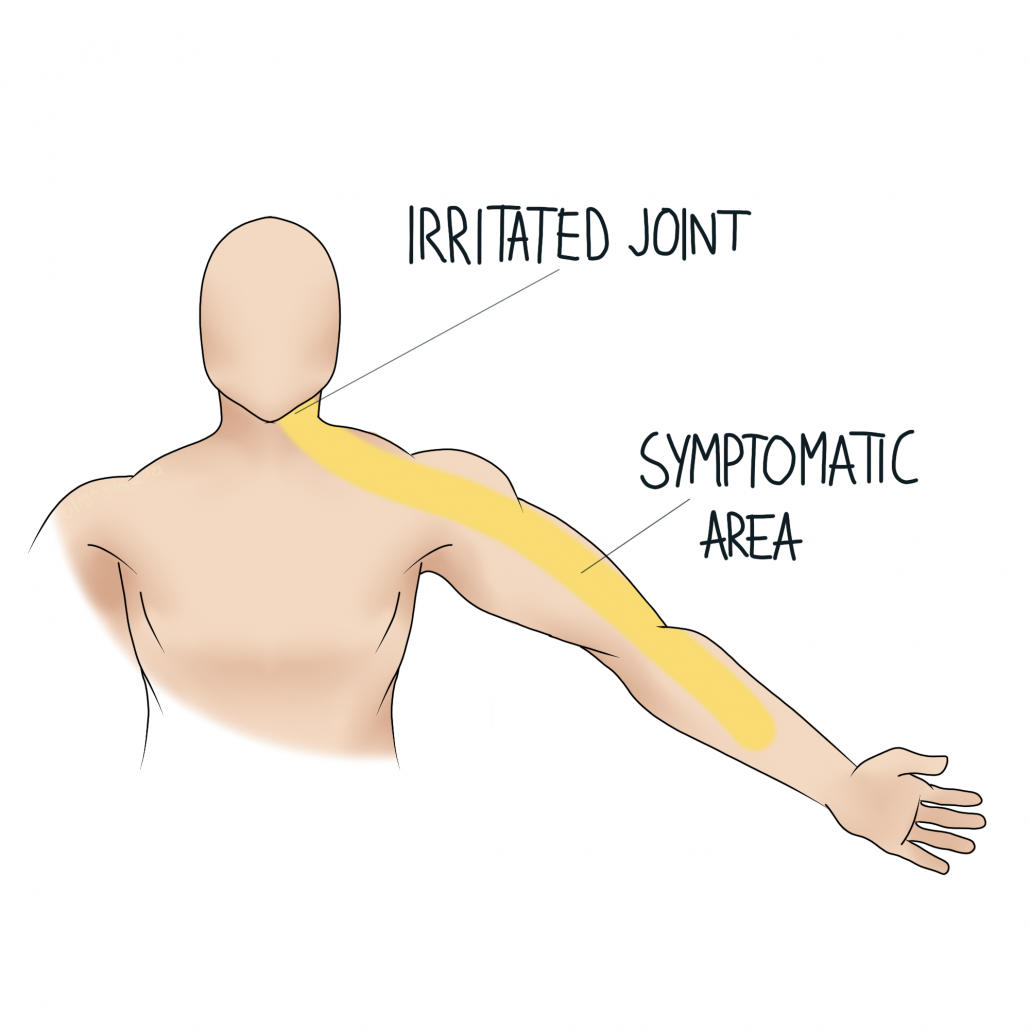Pain is not always felt in the same area that caused it. There are a few reasons why this can happen, and one of them is referred pain (RP). This is a relatively common phenomenon where the brain misinterprets the location of pain. A signal comes in, and the brain recognises the part of the nervous system from which it originated. However, it assigns pain to a different spot within that area. This can mean that an irritated joint in the neck is actually felt as arm pain instead, as the image below shows. RP can affect any part of the body, and your osteopath can map it back to the root cause.

Referred Pain vs Sciatica
Although there are some similarities between referred pain and sciatica, there are key differences that set them apart. Whereas referred pain happens when the brain misinterprets the origin of a pain signal, sciatica is caused by irritation of a nerve. Specifically, the sciatic nerve, which runs down the back of the thigh before splitting in two at the knee, and running down to the foot. Key differences in symptoms are:
- Pain distribution: sciatic pain usually follows a precise line. Referred pain covers a broader area.
- Nature of pain: sciatic pain may be sharp and shooting, in contrast to the more vague, dull ache of RP.
Depending on the causes of each, the aggravating and relieving factors might be very different too. For example, sciatica caused by a disc injury would likely be aggravated by bending forwards or sneezing. Referred pain coming from a joint in the lower back might be aggravated by leaning back instead.
Your osteopath will take a detailed case history and examine you thoroughly to identify the cause of your pain and give you a diagnosis.
Trigger Points
We’ve posted about trigger points recently. They can also cause pain to refer elsewhere, but the patterns are slightly different. The mechanism is similar, but the cause is always a muscle. RP usually comes from a joint, but can also be caused by an organ or other tissue. This is why detailed investigation is important- lower back pain is usually relatively simple, but could be caused by a kidney problem that needs urgent attention.
Management for Referred Pain
In order to treat your pain, we need to first identify the cause. Often it’s an irritated joint, which is usually quite easy to identify. The pattern of referral is not random: we are all wired similarly, and referral maps are well documented. Combining this knowledge with a thorough examination, your osteopath collects enough information to form a diagnosis.
In most cases, treating the root cause will help to resolve the pain. But sometimes the pain is more complicated, especially if it’s been there for a long time. In these instances, we may also need to work to desensitise the painful area with techniques in the clinic, and exercises for you to do at home. If your pain needs further investigation or stronger treatments, we can support your referral back to your GP.

